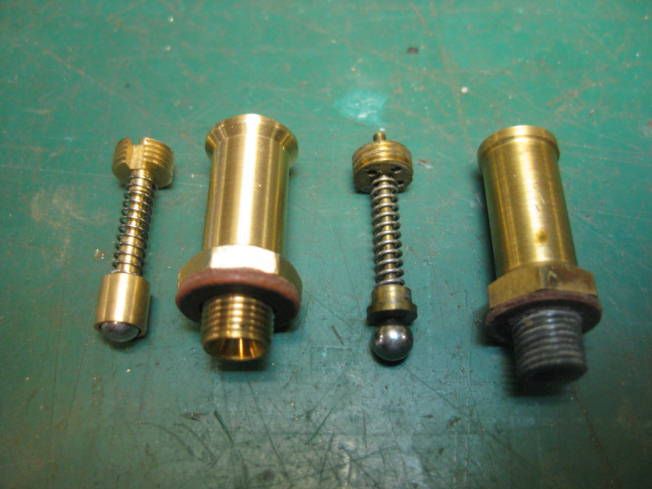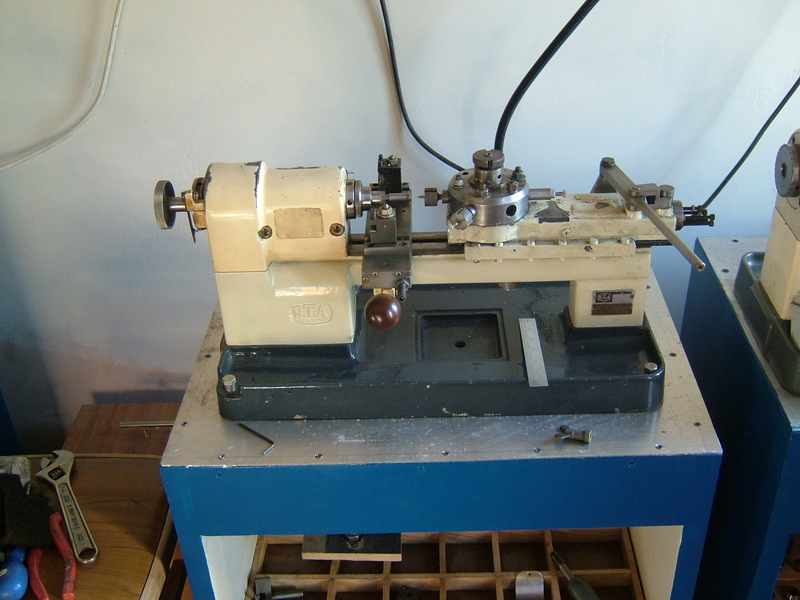Beachside_Hank
Well-Known Member
- Joined
- Oct 26, 2012
- Messages
- 71
- Reaction score
- 27
Hi,
This is the difference between most safety valves and the semi 'pop' variety. The usual valve is on the right and the recently made 'pop' on the left. As can be seen the ball is in a cup on the pop valve and in the open on the other. The ball in the cup is a good rotating fit. When the ball fits in the hole in the valve body the edge of the cup is only a few 100ths of a mm off the valve body. It works (I think) as the steam pressure increases the ball lifts slightly and instead of going directly to atmosphere the steam acts on the inside of the cup and given this extra area opens the valve quickly with a distinct 'pop'. The valve also seems to close quicker and doesn't seem to weep as much as the usual type of safety valve.

Regards Tony.
Your theory of operation is correct as far as I know. I remember in Boilerman school while in the Navy, the seating area of the safety was designed to pop at a given pressure, in the case of our ships boiler that was 610 p.s.i. What the internal flange did was increase the surface area such that the escaping steam would hold the valve open until a lesser pressure was achieved, something like 580 p.s.i. if I recall; simple, reliable, very few moving parts.





